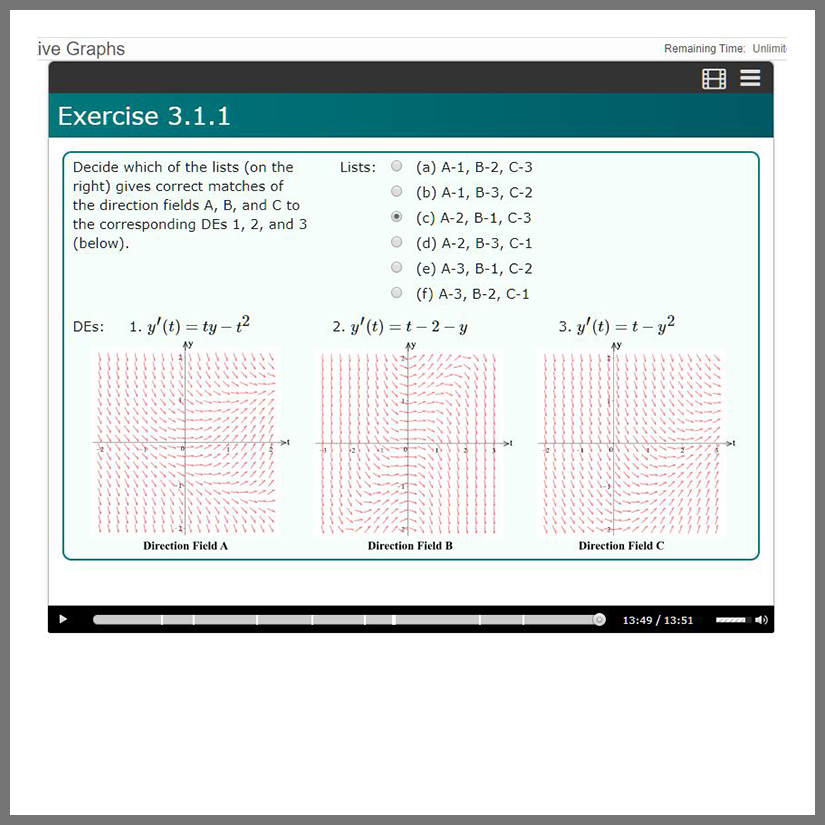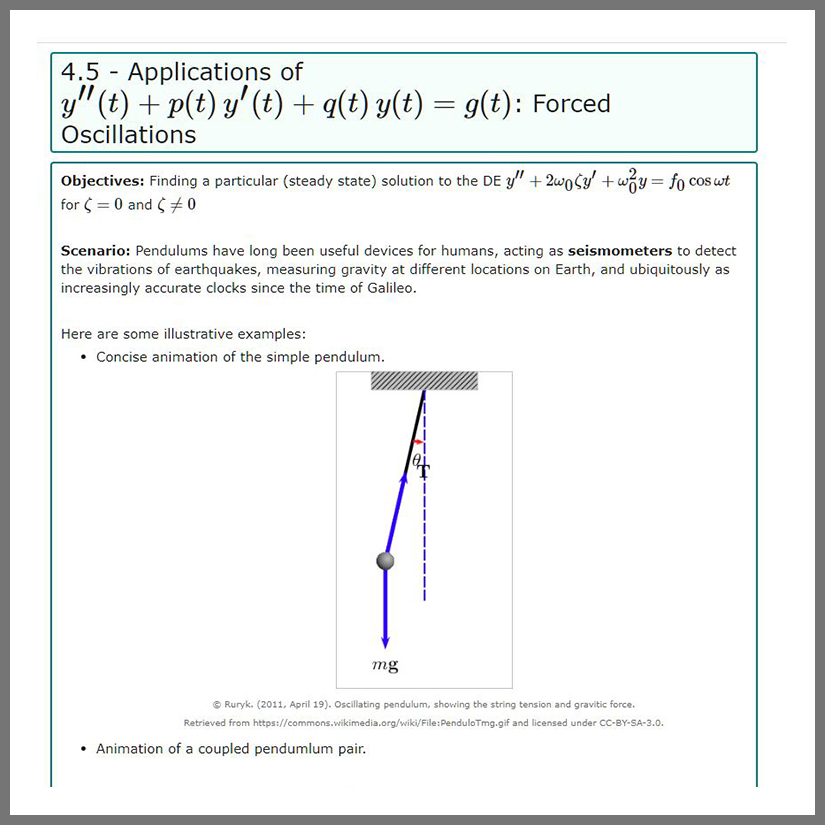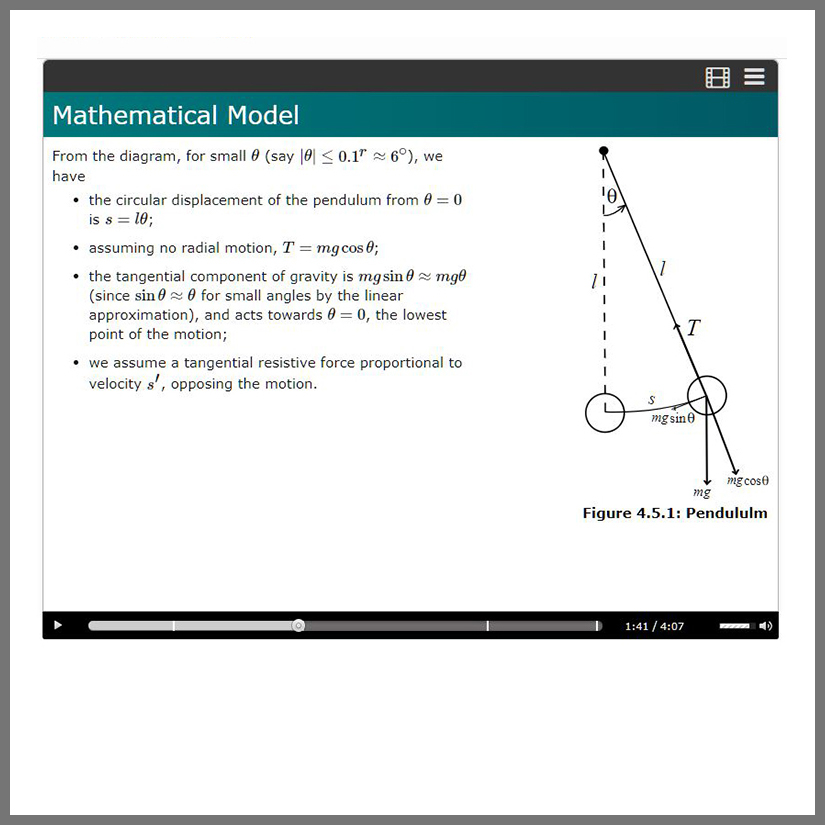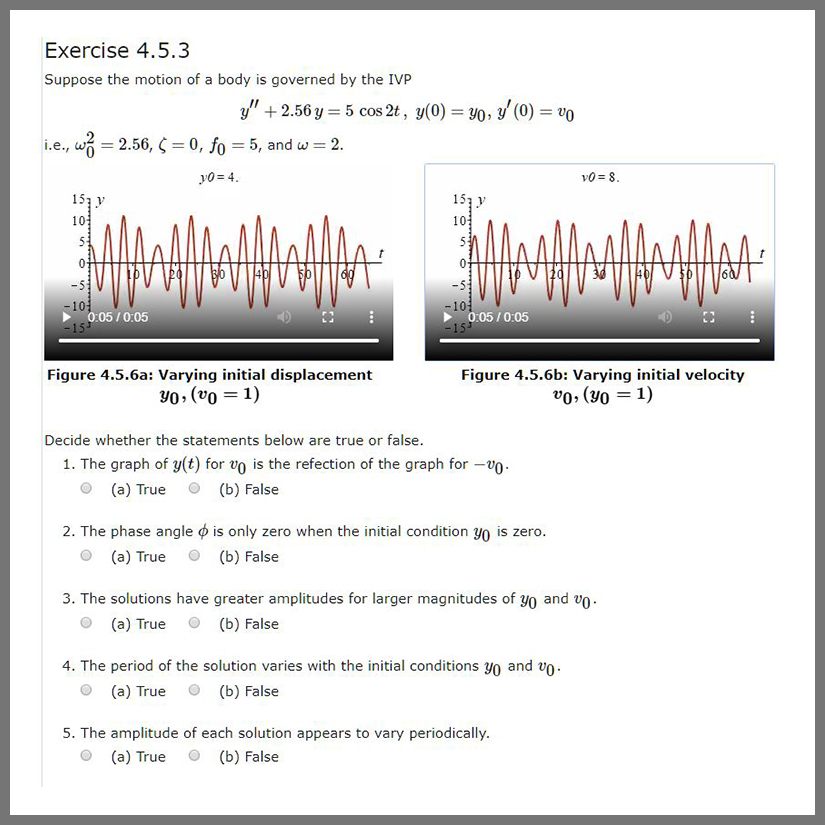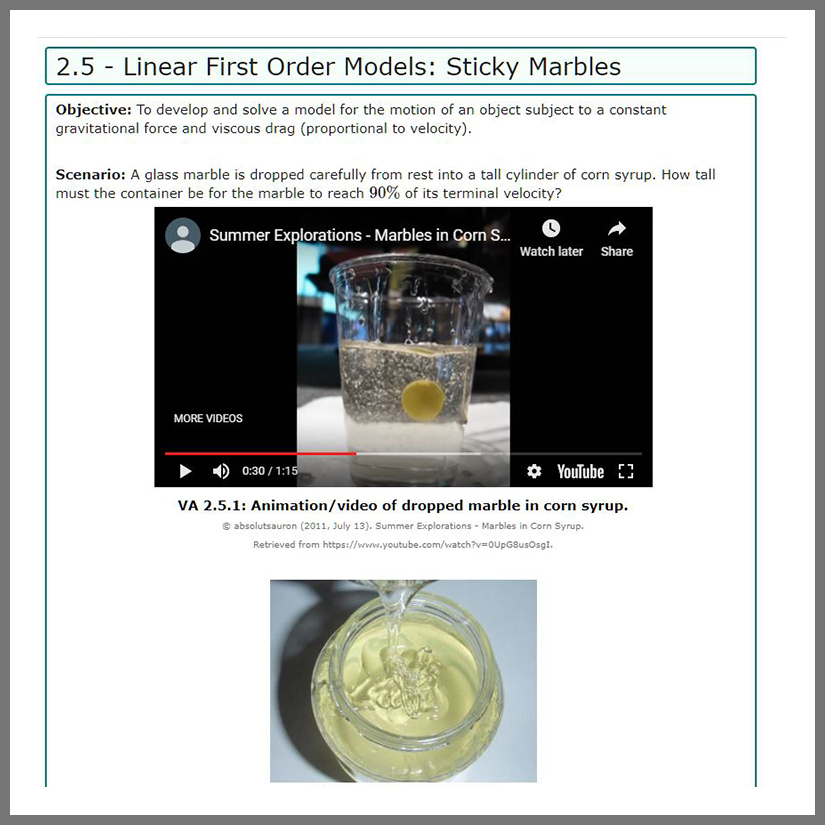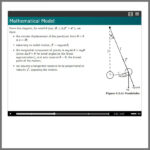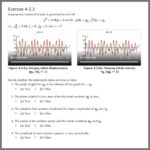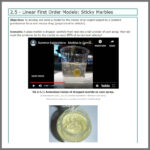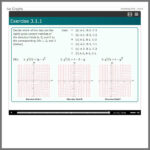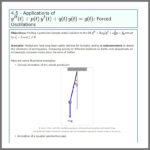Description
The Introduction to Differential Equations Content Pack is a Möbius course developed by the University of Waterloo that you can use as a customizable starting point to a complete differential equations course in Möbius. This Content Pack covers standard approaches to solving first order ordinary differential equations along with associated qualitative analyses, second order linear differential equations, and systems of differential equations. This customizable resource contains 7 units of sectioned lessons and assignments enhanced with Möbius capabilities including in-lesson questions, interactive narratives, Math Apps, immediate feedback, and end-of-section assignments.
How does Möbius take the University of Waterloo’s content to the next level?
Lessons contain interactive elements like Interactive Narratives, HTML objects, Math Apps, or Geogebra applications to help solidify difficult STEM concepts.
Learn how Möbius’ unique STEM question types throughout this content provide the best STEM learning experience.
Work with over 50 configurable assessment properties when modifying existing or building your own assessments.

